Sheep ears - a plant for decorating the garden, arranging rock gardens and flower beds
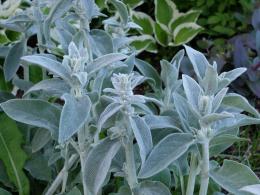
Surprisingly, sheep's ear is a plant as charming as it is unpretentious. It belongs to the species Stachis woolly or woolly chist from the genus Stachys of the Lamiaceae family. This is especially decorative perennial The herbaceous plant is given gray-silver leaves, with a shape and dense pubescence similar to lamb's ears, for which the plant received its popular name.
Currently, there are many varieties, with bushes ranging from 15 to 60 cm in height, which are very popular among lovers of ornamental plants. There are several ways to propagate stachys in the garden.
Content:
How does the sheep's ear plant reproduce?
Stachys woolly can be propagated in several ways:
- seed
- dividing the bush
- cuttings
- nodules
When growing stachys, flower stalks are most often cut off immediately after flowering ends, without waiting for ripening seeds. This is done to avoid self-seeding. To collect seeds, you need to leave a few flower stalks, wait until the capsules ripen in early September and cut them off. Dry it open and get seeds for planting. If stachis is not yet on the site or another variety is needed, then the seeds can be found in seed stores.
After a few years, the bushes lose their decorative value and need to be rejuvenated once every 3-4 years.Overgrown plants can be divided into two or three parts and new seedlings obtained.
Bushes are divided throughout the season, but the best time for this process is spring. Sheep ears can also be propagated by cuttings, which take root quite well. Nodules form on the roots of the plant, which can also become planting material; nodules can be harvested in the fall. They are stored underground in boxes with sand. In the spring, you need to select the strongest tubers for planting.
How to Plant Sheep Ears
Selecting a location
The plant develops its foliage best and displays its decorative properties in places exposed to the sun. The soil needs to be loose, with good drainage and moderate fertility. The poorer the soil, the smaller and silverier the foliage.
Preparing the soil for planting
The selected area is dug up using the bayonet of a shovel; when digging, add a bucket of sand per square meter to the heavy soil. If the soil acidic, you can add kg of chalk per square meter. meter. For sheep ears, neutral or slightly acidic soil is preferable. In very poor soil, you can add 5-6 kg of rotted humus or compost. Adding 40 g of superphosphate and 20 g of potassium sulfate per 1 square meter. will also have a beneficial effect on the planted plant.
Planting methods: seeds in open ground and through seedlings
Sheep ears tolerate frost well. You can sow the seeds in the fall. To do this, you need to make grooves in the prepared soil immediately after collecting the seeds. Sow the seeds and cover them with soil. After 8-10 days, shoots will appear. Before winter, the plant will have time to grow a rosette of leaves. As a rule, it overwinters without shelter.
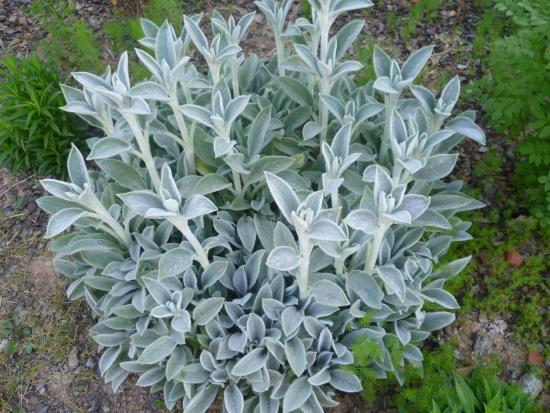
At the end of May, the plant can be planted in a permanent place. When grown through seedlings, the seeds are sown in boxes at the end of March and planted in the ground at the end of May.Leave a distance of 15 - 20 cm between the bushes. After planting, the plant needs to be watered.
Planting with nodules
Nodules can also be plant in autumn and spring. The holes are made at a distance of 15 - 20 cm, the distance between the rows of holes is about 50 - 60 cm. The depth of the holes is 6-7 cm. Nodules sprout in about 10 - 14 days.
Planting by cuttings
For rooting, cuttings with two to three leaves are cut. Prepare a mixture of peat and sand, moisten it and deepen the cuttings to 1/3 of their length. After about 21 days, rooting will begin. Rooted cuttings are planted in a permanent place next spring.
Video
Planting by division
Once every 3-4 years, the mother bushes need to be dug up. This can be done not only in spring, but also in summer and autumn. Divide the plant into 2-3 parts and plant it in a new place. The survival rate of Stachys is very high. After transplanting, new bushes require moderate watering.
Caring for Stachys woolly
Despite its tolerance to dry periods, the plant needs to be watered regularly but moderately in the absence of precipitation. Otherwise, the leaves will lose their elegant appearance, changing their color. With a systematic lack of moisture, the plant may even shed its leaves, leaving thin bare stems instead of a fluffy carpet in the flowerbed.
Loss of silver can also occur when there is an excess of nitrogen and humus in the soil. In this case, the leaves acquire a normal green color. If, as the bush grows, a bald spot has formed in the center, then it must be carefully dug up and plant a young seedling in the middle. This technique allows you to preserve a continuous carpet of leaves. This is very important when stachys is grown as a ground cover plant.
After the winter period, you need to cut off the old stems from the bushes, and during the flowering period, systematically remove the flower stalks along with the buds. In summer, excessively growing rhizomes need to be cut out. The plant almost does not suffer from diseases and pests and tolerates severe frosts well. However, it may suffer from damping off at the end of winter - beginning of spring in conditions of high snow cover and waterlogging of the soil as a result of its melting.

To avoid this, in regions with a lot of snow, you need to install a drainage layer under the holes. To do this, before planting, dig a deep hole, up to 20 cm, pour about 5 cm of small pebbles or expanded clay onto the bottom, after which a layer is added on top soil with sand. After this, the plant is planted. In all other respects, sheep's ears are grown in the same way as other plants for flower beds, alpine hills, rocky gardens, and creating ground cover carpets.

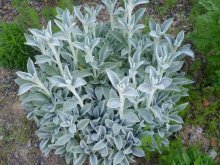
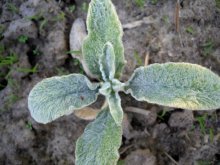
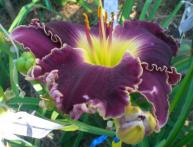
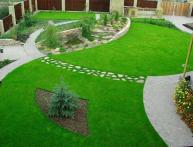
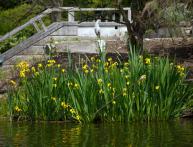

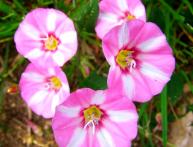
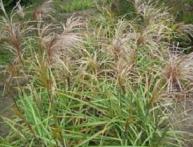
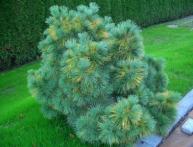
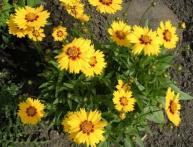
Comments
Sheep's ear plant is unpretentious and reproduces well. I planted several cuttings a year ago, now I have a beautiful border, but it grows quickly, so I really need to remove the flower stalks.